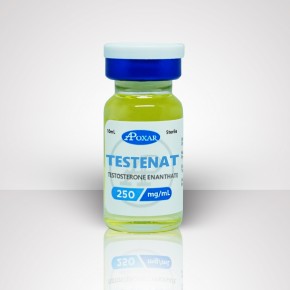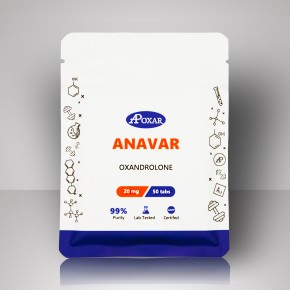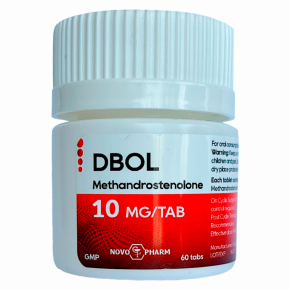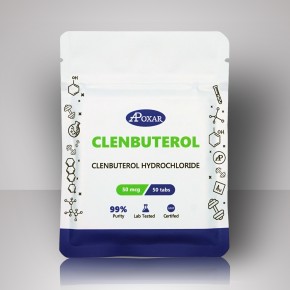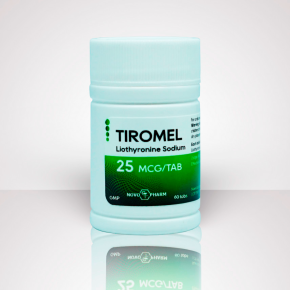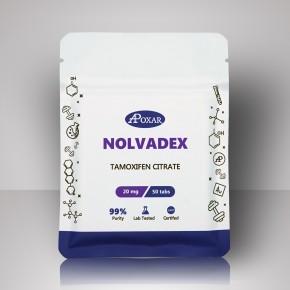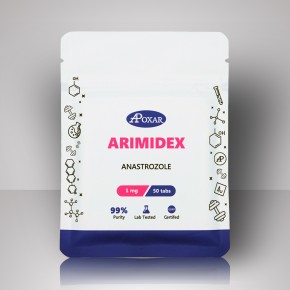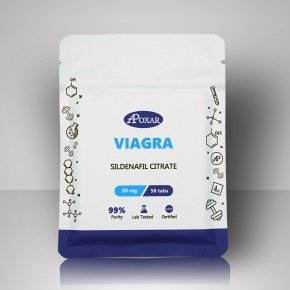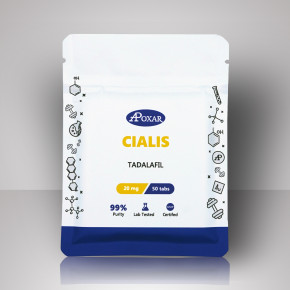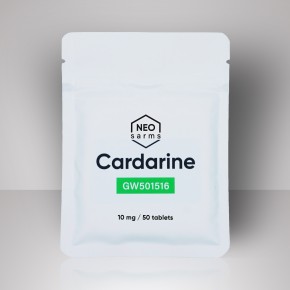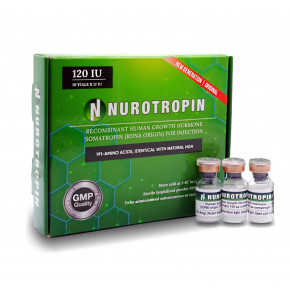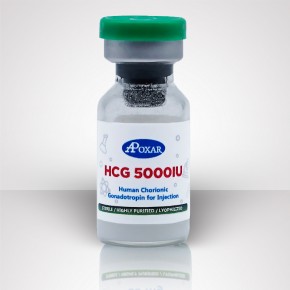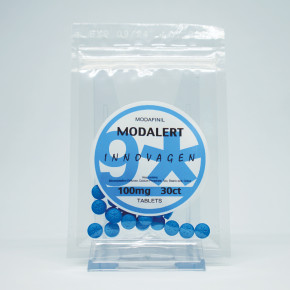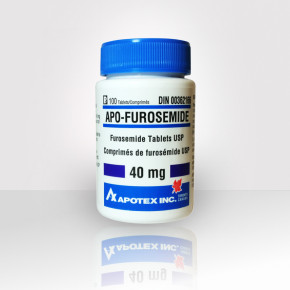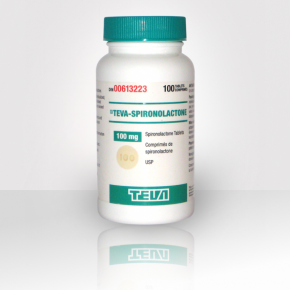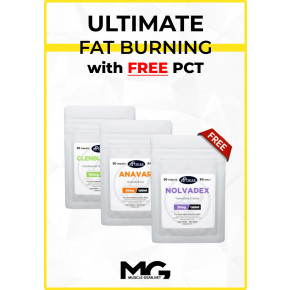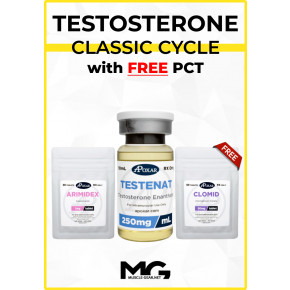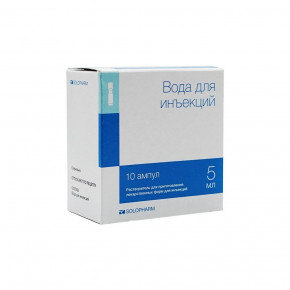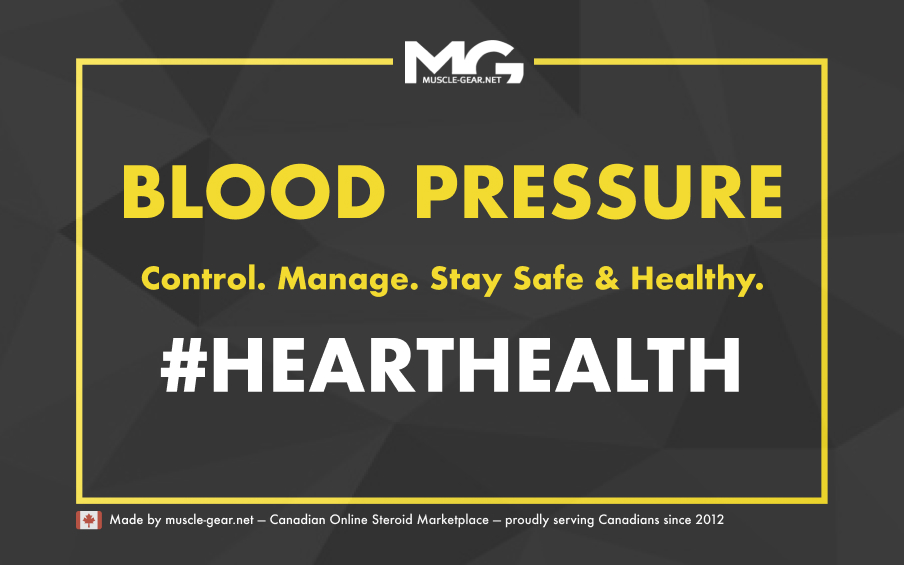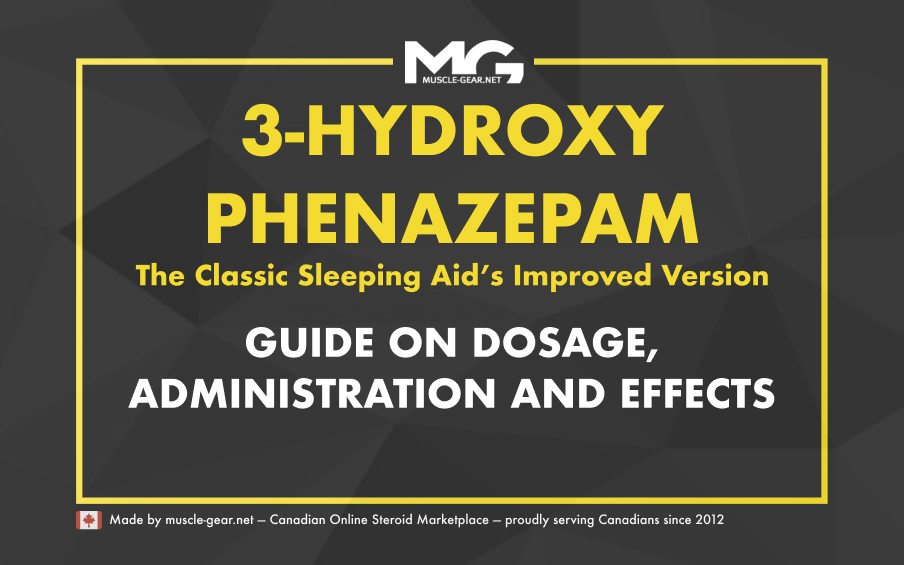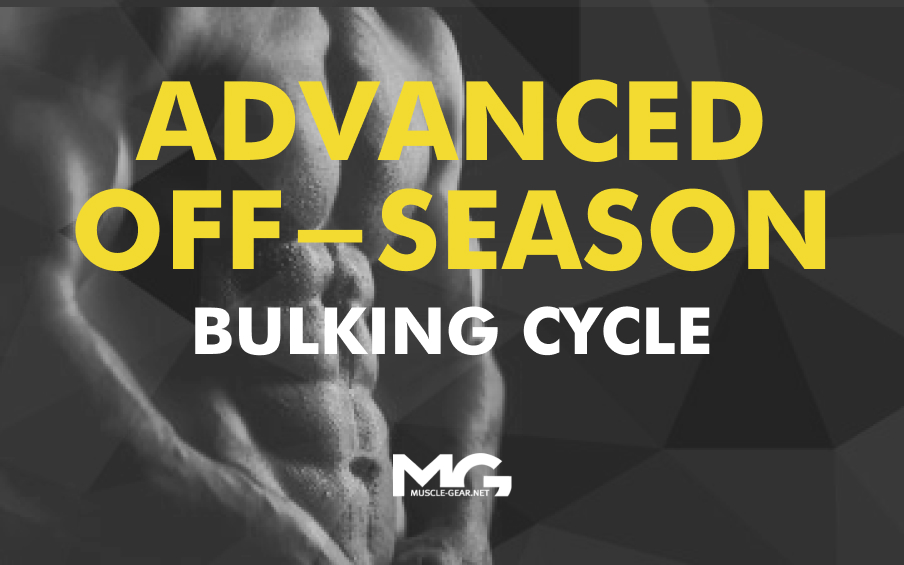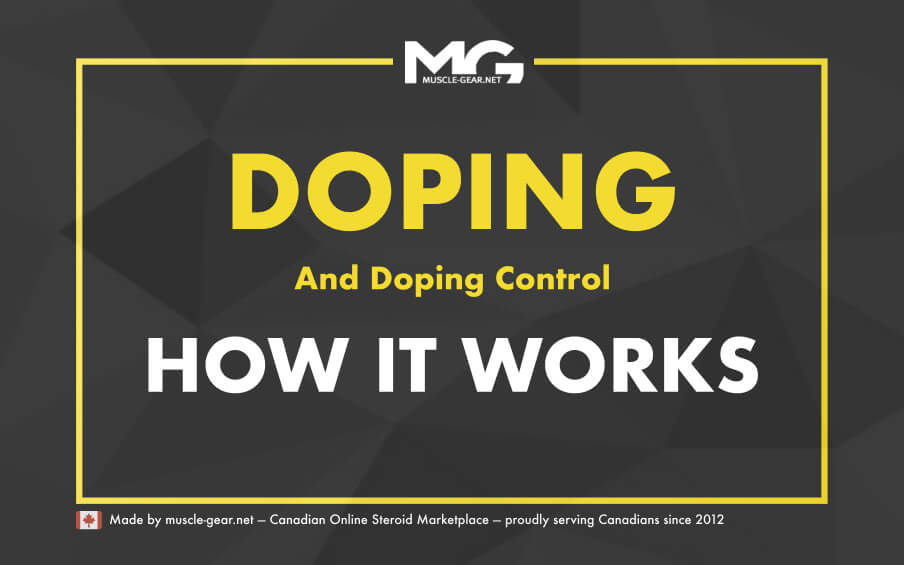Elevated blood pressure is dubbed “the silent killer” for a reason. The last thing you need is putting excessive pressure on your cardiovascular system. Unfortunately, steroids do just that. How can you minimize the risks?
How Steroids Affect Heart Health
Anabolic steroids can make you massive and strong, though they have a crucial flaw: they’re not selective in their action. If you inject, say Trenbolone Enanthate, it will provide some effects — good and bad — all around your body.
The three main areas of extra concern are:
- Blood pressure;
- Cholesterol;
- Heart hypertrophy.
Blood pressure is perhaps the most dangerous one.
Steroids and Blood Pressure
You can expect nearly all anabolic steroids to cause some elevation in blood pressure. All of them to a different extent, though.
For example, Stanozolol is going to raise your BP just a little, Winstrol will push it significantly higher, and Testosterone Enanthate’s effects on BP are strictly dose-dependent.
Practically, symptoms of elevated blood pressure look like this, listed from mild to severe:
- Notable pulsation in your temples;
- Dizziness;
- Fatigue;
- Headaches;
- Occasional blurry vision;
- Nosebleeds;
- Chest pain;
- Arrhythmias.
Doses, cycle length, individual factors, pre-existing conditions, and about a dozen other aspects will define which of these you will experience.
How Steroids Affect BP?
In extremely oversimplified versions, the three main ways the steroids in your cycle affect BP are:
Water Retention
Gear (especially «wet» injectable bulkers like Testosterone) can cause water retention, you get more fluid running through your veins, and the blood pressure goes higher;
Vasoconstriction (narrowing of the blood vessels)
Your blood vessels literally get slightly narrower in diameter with AAS. Less space for all the blood to run through equals higher blood pressure.
Increased RBC Production
Anabolic steroids promote increased red blood cell count. Some AAS (“dry” orals more so) stimulate the production of a hormone called erythropoietin, which is responsible for the production of RBCs in the bone marrow.
While increasing RBC production may seem like a good thing, it can actually have negative effects on heart health. Along with a better pump, a more notable muscle oxygenation, better endurance and less fatigue from intensive workouts, you get — physically — more red blood cells in your blood, and higher blood pressure as a result.
What Can You Do About It?
So we have it clear, the gear you take is not particularly good for your blood pressure. What now? What exactly should you do to keep the issue under control?
We suggest this plan:
- Eliminate the worst of the risks;
- Go for lifestyle adjustments;
- Monitor your heart closely;
- Minimize the peak damage on cycle with medications.
Here’s a step-by-step plan, an expanded version that (if you follow it) would make your cycle way safer in terms of cardiovascular issues.
Step 0: Make Sure You Actually Can Take Steroids
It’s step zero for a reason: if you have pre existing heart conditions, you should NOT take steroids. Simple as that.
Steroids are EXTREMELY dangerous, if you have or had:
- Heart valve disease;
- Aortic aneurysm;
- Aortic dissection;
- Cardiomyopathy;
- Pericarditis;
- Endocarditis;
- Myocarditis;
- Pulmonary hypertension;
- Stroke;
- Transient ischemic attack (TIA);
- Peripheral artery disease (PAD);
- Venous thromboembolism (VTE);
- Deep vein thrombosis (DVT);
- Pulmonary embolism (PE).
That’s not an extensive list, since there are hundreds of heart health issues, and you actually need a full-scale check-up, but you get the main point: if your heart is not OK — you’re not supposed to take steroids, orals or injectables, they possess a life threat for you.
Sorry, but it’s “better natty than dead”.
Step 1: Lifestyle Adjustments
That’s where we get practical. If you plan on taking or already take anabolic steroids, you know that some extra pressure is coming for your cardiovascular system. Wouldn’t it be nice to remove some of the existing pressure from it first? Here’s a list of things you can do to get a natural “boost” in heart health:
- Quit drinking (alcohol is bad for your heart, and you know it);
- Quit smoking (quite an obvious one);
- Lose weight (at least try to, fat tissue is notoriously bad for your heart and blood pressure);
- Lower stress (sounds simple, hard to implement, but if you at least try to eliminate some of the stress factors that cause spikes in BP — it would be nice);
- Stop eating junk food (trans fats affect your cholesterol, and cholesterol affects your heart health);
- Eat more healthy food (whole grains, fruits and veggies, low-fat dairy, you know the drill);
- Work on your sleep (if you have messed up sleep schedule, your heart is under extra pressure daily);
- Work out regularly (we assume you already know the benefits of physical activity and don’t skip your workouts).
None of these things alone can significantly alter your heart health or make you “risk-proof” in terms of steroidal side effects on blood pressure. Implemented all together, though, these things would make a difference.
Step 2: Monitoring
It’s more of a check-box thing, not a practical step. What exactly can you do to make sure you know, at any given moment, how “good” or “bad” your heart is doing now?
- Maybe it means buying a wrist monitor or a watch (though those are not always accurate);
- Or doing your research and buying a classic BP monitor and learning to use it properly;
- Maybe it’s talking to your doc about regular checkups and making appointments in advance, for more in-depth analysis;
- Something as basic as finding a clinic or a medical professional first to know where to go when in doubt;
- Or even googling normal BP for your age and finding the baseline, the resting norm for you.
Depending on your experience, you can take whatever steps necessary, mentioned here or the ones you come up with on your own.
It’s not the exact steps that matter here, it’s the goal: You should be able to monitor your blood pressure when it’s necessary, accurately, with an ability to analyze it and say if it’s OK or not.
Step 3: Have Medication On Hand
If you make it to this step, you already know that you have no pre-existing BP issues, know that your lifestyle puts no extra pressure on it, and can measure it whenever necessary. So what happens if you see it going up?
Most of the time, you need medication to lower your BP on cycle. In Canada, several options are most commonly used.
Lisinopril
Lisinopril is an angiotensin-converting enzyme (ACE) inhibitor used to treat hypertension and heart failure. It works by relaxing blood vessels, which helps to lower blood pressure and improve blood flow. Nowadays, Lisinopril is considered the most popular BP medication for steroid users.
You can get it officially prescribed or buy Lisinopril right along all your other gear. The effects are dose dependent and individual, so it’s best to start with a lower dose of 10mg when your blood pressure gets high, and look at the response. If needed, lower it down to 5mg or raise up to 20mg gradually. Don’t take more than once a day, though.
Less Popular Options
While Lisinopril is now almost a synonym of BP management on cycle, like Nolvadex for PCT, there’s a ton of other options on the market. For some, you’ll need an official prescription, though.
- Bystolic (Nebivolol) — a beta-blocker used to treat hypertension. It works by slowing the heart rate and reducing the force of the heart's contractions, which helps to lower blood pressure. It’s also a popular option, though less common in the bodybuilding community;
- Cozaar (Losartan) — an angiotensin 2 receptor blocker (ARB) used to treat hypertension in patients with an enlarged heart. It works by blocking the action of a hormone that narrows blood vessels;
- Micardis (Telmisartan) — another ARB, identical to Losartan in terms of effects. Micardis has a longer half-life, though, and it’s believed to be a bit more effective;
- Viagra (Sildenafil citrate) — the blue pill is another vasodilator (a class of drugs that “expand” your blood vessels, narrowed by the use of steroids. It’s more effective than Cialis for this goal, but has some “side effects” (you know which ones we’re talking about).
Note that NONE of the compounds above should be taken lightly. Make sure that you actually have hypertension (elevated blood pressure) before taking any BP-lowering pills. Hypotension (low blood pressure) is just as risky and uncomfortable, and it’s a real risk if you take too much or take it when it’s not necessary.
Conclusion
Heart disease is officially the number two reason for death in Canada, second only to cancer. You HAVE to be careful with your heart and your BP, and you should be TWICE as careful with it when it comes to steroids use.
Don’t take gear if you already have reasons to worry, quit all other risky stuff before you start the cycle, make sure you know how to spot the red flags in time, and get some medication to keep your cycle safer.

 Trusted by 50,000 Customers
Trusted by 50,000 Customers